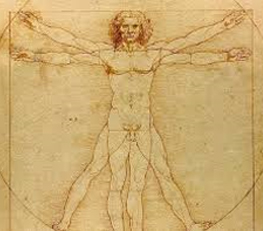(21-07-2018) A brisk walk doesn’t cut it for teenagers: They need vigorous, out-of-breath physical activity to prevent obesity, heart disease
(Natural News) It’s never too soon to start caring about your body. Teenagers, especially, could stand to gain a lot for taking steps to get fit. Still, with the impact of today’s technologies – it’s easier to sit at home and binge-watch television than go out and engage in physical activities.
Unfortunately, this has become the norm for most teenagers – with the rates of physical activity slowly declining – which can lead to serious consequences down the road. So, researchers from the University of Exeterhave proposed changing health guidelines for teenagers to include exercises that prioritize “increasing levels of cardiorespiratory fitness, muscular fitness, and vigorous physical activity.†They’ve also proposed cutting back sedentary time used for watching television. The study, which will be published in the March 2018 edition of the International Journal of Cardiology, indicates doing these activities willsignificantly reduce the risk of cardiovascular diseases (CVDs) in youth.
“Many previous studies have put moderate and vigorous physical activity together when looking at potential health benefits, as this is what health guidelines are based on,†explained Dr. Alan Barker, from the University of Exeter. “We wanted to separate these and see whether their effects varied.â€
Researchers wanted to independently determinethe link between physical activity – in particular, the intensity of activity – and its effects on sedentary time and fitness levels. For the study, they defined a vigorous physical activity as that which would require at least six times the energy that a person would use while at rest. Moderate activity was defined as half of that level, at three times. In a report from the U.K.’s Chief Medical Officers, aerobic dancing, cycling, swimming, and tennis fall under vigorous activities.
The data used came from theHealthy Lifestyle in Europe by Nutrition in Adolescence(HELENA) study, a cross-sectional approach on 534 teenagers from Europe, aged 12.5 years to 17.5 years old. Using accelerometers, the time spent by the teenagers doing light, moderate, and vigorous physical activities were measured – including their sedentary time. For their TV viewing time, data was gathered through a survey. To test the teenagers’ cardiorespiratory and muscular fitness, a 20-meter shuttle run was used in concert with a hand dynamometer. CVD outcomes were determined using factors such as body mass index (BMI), waist circumference, height, the sum of skinfolds, blood pressure, blood lipids, and insulin resistance. The clustered cardiovascular risk was measured using the sum of skinfolds, insulin resistance, blood lipids, and blood pressure.
The findings indicated that only vigorous physical activity marked a significant impact on the risk factors related to CVD, such as BMI and the sum of skinfold, as well as with its clustered risk. Moreover, watching television also marked a positive correlation with clustered CVD risk, as well as insulin resistance.
Researchers concluded that vigorous physical activity is essential in boosting fitness, which can reduce the risk of CVD later in life. (Related: Adults and kids buck depression, anxiety and hyperactivity with exercise.)
Cardiovascular disease – the umbrella term for all conditions thataffect the heartand the blood vessels such as coronary heart disease, angina, heart attacks, heart failure and stroke – account for17.7 million deaths worldwide per year and is the leading cause of mortality, according to the World Health Organization.
Sources include:
Science.news
ScienceDaily.com
InternationalJournalofCardiology.com
WHO.int
News
In evidenza
 "L'informazione presente nel sito serve a migliorare, e non a sostituire, il rapporto medico-paziente."
"L'informazione presente nel sito serve a migliorare, e non a sostituire, il rapporto medico-paziente."
Per coloro che hanno problemi di salute si consiglia di consultare sempre il proprio medico curante.

Informazioni utili
-
Ricette a zona
-
Tabelle nutrizionali
-
Tabella composizione corporea
-
ABC della nutrizione






